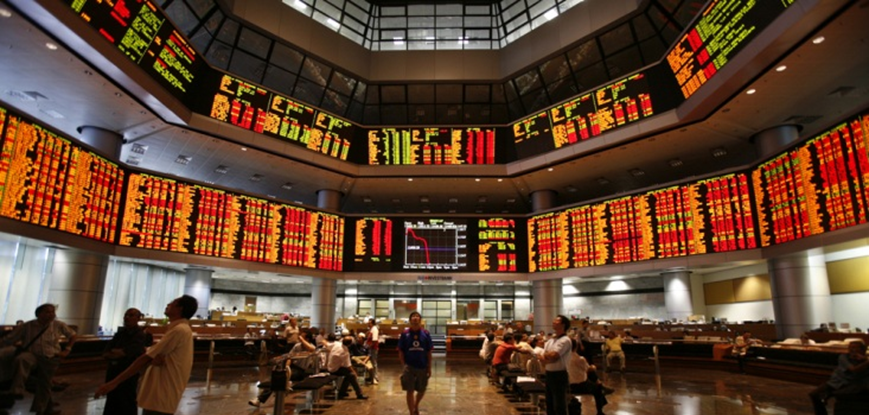
By Gaurav Raizada and Varun Divakar
When someone wants to learn how to trade, where do they start? What markets should they focus on? What setups or patterns should they consider for trading? How much risk should they take in their trades?
All of these are common first questions, and all of them are the wrong initial questions.
Introduction To Trading
Learn how trading begins with a conceptual framework: an understanding of how and why markets move and how and why they are related to one another.
When scientists undertake experiments, they don’t throw all sorts of things at the wall to see what sticks. They begin with a theory–a tentative explanation of their observations–and then use that theory to guide the genesis and testing of hypothesis. “There is nothing so practical as a good theory”, psychologist Kurt Lewin once remarked. The theory organizes thought; it helps us focus on what is important and eliminate what is irrelevant.
Most traders operate with their theoretical, conceptual frameworks as well. The psychoanalytic perspective and the cognitive-behavioural approaches derived from learning research: these are ways of making sense of people and their patterns. That is precisely why new traders sit with older, experienced traders to learn the logic, sense and approach.
Too often, traders begin learning markets by trying to learn patterns that they can trade. Without the scientific grounding in observation and theory, such traders end up risking their money without truly understanding what they’re doing and how it fits into the larger picture of supply and demand in their markets. It is no wonder that such traders have difficulty sustaining confidence and discipline: if you don’t grasp why you’re doing something, it’s hard to do it with conviction.
Basic Competencies for a New Quantitative Trader
It is often quite difficult for new quantitative traders to obtain impartial guidance in starting their careers, so such resources are quite valuable. The topics for the questions range from trading mechanics and trading systems to market microstructure and trading careers.
In general, I would highlight four key areas of learning that one should have to start their career as a quantitative trader today:
Macroeconomics
You would want to have a firm grasp of inter-market relationships and how monetary policy affects interest rates, currencies, and economic growth. The basics of equity, currency, interest rates, commodities and credit markets are essential in trading any developed/developing markets. Especially now that the markets are inter-linked tightly and traded in conjunction with each other. This information may or may not determine the trade over the next half-hour, but a clear understanding of the issues at hand is of utmost importance in terms of visualizing and building the trading systems. A lack of understanding of macroeconomics and inter-market relationships has been a major reason many short-term traders have lost money fighting the market.
A Trading Theory
A trader needs a framework for thinking about price movement and making sense out of the steady stream of price changes across markets. I’m not sure that it matters greatly whether traders subscribe to one theory or another, but I am certain that having an explanatory framework is better than not having one. People subscribe to a variety of Fundamental or Technical theories. In Quantitative Trading, theories of market microstructure, double auction markets, behavioural finance, trading psychology, trading patterns, market profiles, relative valuation, etc. are used alone or in conjunction with other theories.
Observation
Hands down, the smartest thing I ever did when learning how to trade was to watch markets for a long time before trying to trade them. I collected charts of intraday action and even tick-by-tick and, each day looking for the best trading opportunities. Over time, I started to see repetitive patterns among those opportunities and those became important to my subsequent trading. Watching not only price, but volume, sector behaviour, inter-market action, and such measures as ticks help you recognize the dynamics of breakouts, reversals, and trends.
Optimality In Coding
The way Platform and Strategy are coded, also matters when there are other systems looking for similar opportunity. Especially in cases where the profits being sought can be measured in terms of few ticks, then the time and speed to route your orders to the market are crucial. The code should be able to handle any kind of market circumstance and take care of high-risk events. Knowing what I know today, if I were starting out as a trader or advising a beginning trader, I would advocate at least a half year of learning, observation, and practice paper trading before putting money at risk. I strongly believe that a major reason new traders don’t succeed is that they fail to put in the necessary time to learn markets and acquire the much-needed skills.
Machine Learning
Machine Learning has become an import part of the list of skills a Quant Analyst should have. Majority of the strategies used in trading be it technical, quantitative or fundamental can be automated and be optimized. To optimize the code you need to have a strong understanding of the language in which you are coding, and to optimize the strategy you need to have a strong understanding of the features of the strategy and the necessary machine learning model that would be suitable for the problem at hand. There are good Machine Learning algorithms in the market that are capable of understanding the sentiment in the markets using the Twitter feeds or other similar news feeds. Incorporating such algorithms will give you, as a trader, a significant edge over other traders.

Python/R/C++
Which language to learn? This is probably a question which haunts every beginner in the field of Quantitative trading. If you know where a particular language is used then you will be able to understand which language suits your needs better.
C++ is used extensively in those strategies where the time of execution is the most important parameter. For example, in HFT (high-frequency trading) where the trades are completed in less than a second, the language you choose can make or break your strategy. In such scenarios, C++ is the best possible option.
Python or R have extensive usage in the field of analytics and finance. They are used extensively in algorithmic trading and almost every major broker in the world has an API supporting at least one of them. There is nothing to choose from either of them, they both provide similar features and libraries and are both open source. R is a well-established language in the field of finance and Python is a relative newcomer. But the popularity and usage of Python has been growing exponentially.
Next Step:
We bring to you an Option based trading strategy where you can calculate the payoff chart with help of Python programming. Click here to access the Iron Condor options trading strategy which is a combination of the bull put spread options trading strategy and bear call spread options trading strategy. It is one of the simplest strategies that can be practised by traders even with a small account and can make the time decay work in your favour.
Disclaimer: All data and information provided in this article are for informational purposes only. QuantInsti® makes no representations as to accuracy, completeness, currentness, suitability, or validity of any information in this article and will not be liable for any errors, omissions, or delays in this information or any losses, injuries, or damages arising from its display or use. All information is provided on an as-is basis.


